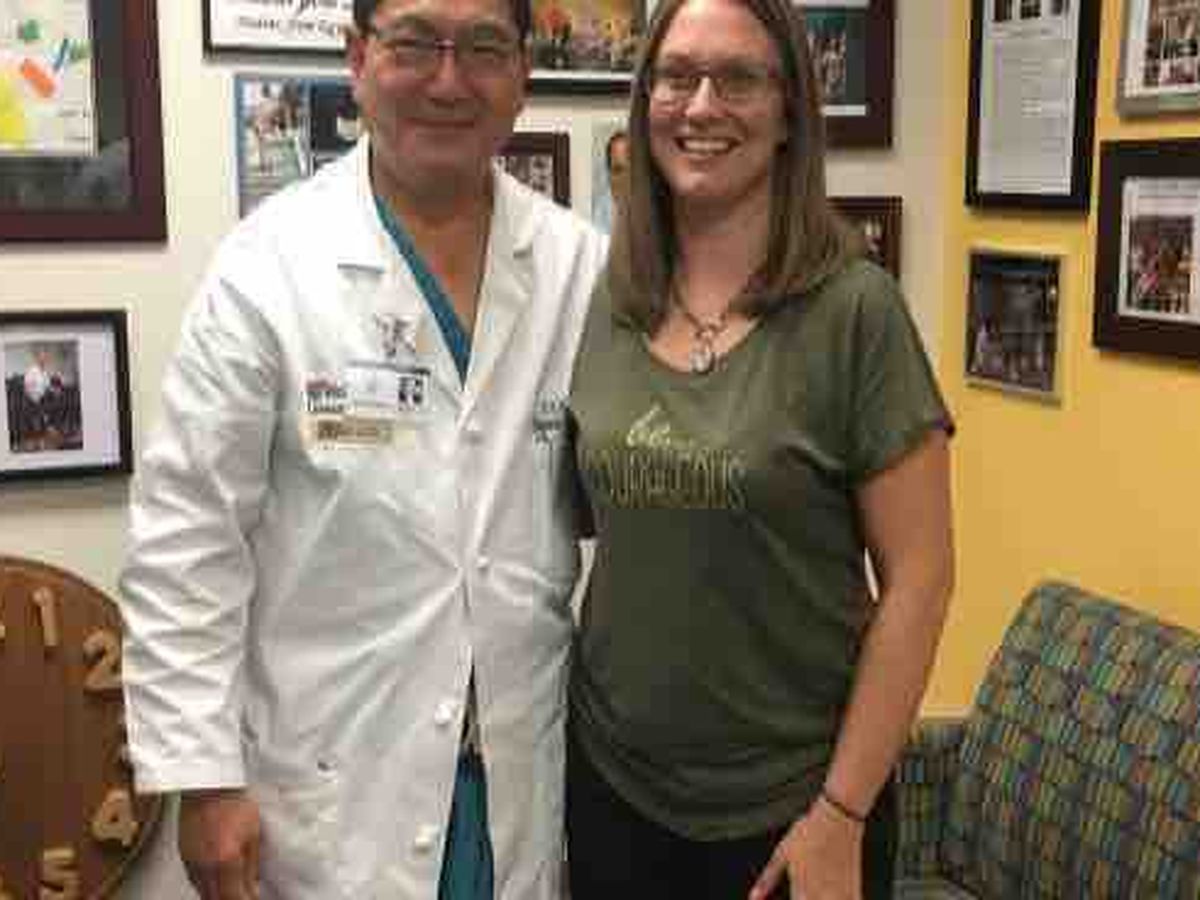 
I created this page for my daughter, Carrie, an amazing individual who continues to defy the odds. Thirty-two years ago, she was born three months early weighing just two pounds! With a twenty percent chance of survival, her future was uncertain. By the grace of God, Carrie only has Spastic Diplegia Cerebral Palsy (CP), an irreversible neurological condition that causes spasticity or stiffness from the waist down; this affects her balance, coordination, posture and walking. To understand spasticity, imagine the heavy feeling of rubber bands being wrapped around your legs, pulling you back with each step you take.
 
Throughout childhood, Carrie underwent multiple orthopedic surgeries at Shriners Hospital in Tampa to help her walk better; but by her mid-twenties, she began to notice a gradual decline in her mobility and an increase in pain. Spasticity was starting to take a toll on her body physically and emotionally.
 
CP is of the most common physical disability of childhood, yet the symptoms do not magically disappear once someone turns eighteen. From leg spasms to Achilles Tendonitis, Carrie visited doctor after doctor hoping to find a solution to the constant pain she was experiencing. Ready to throw in the towel and accept chronic pain as her “new normal”; Carrie stumbled across a blog written by a woman with CP who was training for her first half-marathon!
A surgery called Selective Dorsal Rhizotomy ( SDR) made it possible for Lynley to train and complete the half marathon. During the operation, sensory nerves in the spinal cord are tested under a microscope. The overstimulated nerves are then severed, which stops the brain from telling the muscles to constantly contract. With spasticity gone, Carrie will activate muscles that have never been used before; this will allow her to work out and gain true strength. (To learn more about the surgery click here.)
In October, after several months of researching SDR, Carrie traveled to St. Louis, Missouri for a consultation with a world-renowned neurosurgeon, Dr. T.S. Park; who confirmed that without SDR, Carrie would eventually lose the ability to walk. To ensure this does not happen, after the operation, Carrie is required to commit to a lifetime of daily stretching and physical activity.
 
To prepare for her upcoming surgery Carrie is working with Stay in Step , a rehabilitation, and personal training facility on a weekly basis. This center is designed to provide exercise intensives for individuals with spinal cord injuries and neurological conditions.
 
Thank you for taking the time to read Carrie’s story. Below you will find a list of frequently asked questions.
1. What will my donation help cover?
Costs for surgeries, physical therapy/personal training visits, and post-op appointments not covered by insurance
Airfare to and from St. Louis
Lodging while in St. Louis
Transportation to and from physical therapy/ personal training sessions
Small exercise equipment (i.e. medicine balls, weights, resistance bands)
Costs related to daily living while out of work
2. Is SDR a cure for CP?
There is no cure for CP. However, SDR is the only way to permanently reduce spasticity in the body, thus improving the quality of life for individuals with CP.
3. How will SDR help Carrie?
Maintain the ability to walk
Decrease pain
Increase stamina
Improve walking, balance, and flexibility
4. Why is Carrie going all the way to St. Louis for SDR?
There are a handful of doctors in the nation who perform SDR on adults. Carrie is choosing to have SDR done by Dr. Park because of his expertise; to date, Dr. Park has performed SDR on more than 3,000 individuals. To learn more about Dr. Park watch this video.
5. Will insurance cover this procedure?
Yes, but the procedure is considered "out-of-network."
6. What will recovery from SDR look like?
Carrie will be in St. Louis for ten days. On the third day after surgery, she will start physical therapy and begin walking with her "new legs." Carrie will be out of work for about a month, as it will take that long to regain the strength and endurance she had before the operation. Carrie will attend physical therapy/ personal training four to five times a week, for the first four months after surgery. At the four-month mark, Carrie will return to St. Louis for a mandatory post-op visit. To maximize the full benefit of SDR, extensive physical therapy / personal training is required for two years post-op.
7. Will additional surgery be needed in the future?
It's likely additional surgeries in St. Louis will be needed to remove contractures a.k.a tightness caused by years of spasticity. PERCS, a minimally invasive tendon lengthening procedure, and reconstructive foot surgery may be required so Carrie can walk flat-footed instead of toe-walking.
8. Will SDR give Carrie the ability to drive?
Unfortunately, no. Carrie's inability to drive comes from a lack of depth perception and poor reaction time.
9. I live in Tampa. How else can I support Carrie during her recovery?
Through prayer
Bringing her a meal
Helping with rides
Visiting/ getting her out of the house

